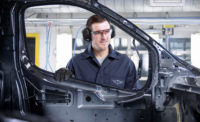Although the gas detection market has matured over the years, it has become increasingly technologically savvy. Just as today's students use calculators instead of slide rules, similarly, today's professionals are armed with high-tech instruments that provide more precise information in an instant. Intuitive software programs that graphically display the readings for the professional overwhelmed with added responsibilities have replaced manual calculations of short term exposure limits (STEL) and time weighted averages (TWA). Gas monitors have become compact personal assistants that have on-board calculations and storage of industrial hygiene measures tied to the employee(s) that used the instrument and the area(s) of exposure.
Intuitive, intelligent
The instruments' capabilities, as intuitive and intelligent as they are, improve and challenge the expectations for workplace safety by bringing more accurate data to the forefront. This supports the sense of mission idealized by the industrial hygienist or safety manager, in that they are continually seeking better working conditions for employees.In the past, products came as standard four-gas monitors and users would need to choose the additional features they most desired, and the price of the product would be calculated accordingly. These days, the apple-to-apple comparison of all the features and benefits takes a discerning evaluation.
So what features can you expect to see out there in today's gas monitoring equipment? For this discussion, let's ignore the compliance-type bare bones product, and look at the versatility of the multi-gas monitors serving most industries' needs.
One-to-six gas monitoring with interchangeable sensors - Multi-gas designs provide flexibility of monitoring for a variety of applications. Interchangeable sensors allow you to have an instrument set up to monitor chlorine and sulfur dioxide today and configure it for carbon monoxide and nitrogen dioxide tomorrow if the need arises. This adaptability reduces operating costs and training expenses. Field-changeable sensors reduce downtime associated with instrument and sensor service.
User configurable operating system - Sophisticated programming of the instrument's operating system allows you to "tune" it to your specific application for display choices, alarms, calibration, datalogging and other instrument operations.
Text / numeric display toggle - Worker efficiency and skill level may determine a manager's decision to activate a text-only vs. readings mode. A "go/no-go" text only mode provides minimal display data while real-time readings of all gases simultaneously allows the operator to view all sensor readings at a single glance. Some instruments can simultaneously activate a text-only display for the end-user while having the more advanced features working in the background for industrial hygiene uses.
Data input for user and site ID recording - A data input element further enhances the logged data to imprint the datalogger with user and location information automatically. One benefit this provides is the means for validating gas survey data through identification and time/date stamp of each monitored site, user, and gas measurement / exposure record. Field data input can be achieved manually or be automated by scanning bar codes or memory devices.
Peak readings - A peak / hold function allows professionals to track peak exposures during job functions at the end of a work shift or after a monitoring incident has occurred. This feature can provide the tracking of workers' gas exposures or provide useful evidence during incident investigations without the complexity of logging data.
Latching alarms - Usually a selectable option, high alarm levels "latch" on to ensure a warning is not ignored and the user acknowledges the danger. Latching alarms cannot be turned off unless the atmosphere is clean and conditions are safe.
Security code / password protection - Management controls and configurations can be access-protected through secured login with a security code.
One-button operation and calibration - User-friendly operation and maintenance through the touch of a button simplifies training and encourages field use and trust of the instrument. Simple calibration routines reduce the time and calibration gas required for each calibration.
Auto-calibration or automated calibration - Smart electronics result in simplified calibration, either through instrument push-button routines, or automated calibration stations. Minimizing human error and liability through complete automation that provides hands-off calibration and recordkeeping reduces overall instrument operating costs and ensures proper documentation.
Calibration clock - next / last cal date - Many instruments provide the option to track and display the last calibration date and/or the next date the instrument is due for calibration.
Interchangeable power supply / battery choices - Most monitors offer a variety of power sources, including the latest rechargeable batter technology, which can provide round-the-clock monitoring capabilities, as well as alternate battery power available at a moment's notice. Extended instrument run-time allows for lasting power throughout long shifts for continuous worker protection.
LEL/CH4 sensor over-range protection - An electronic switch shuts off power to the sensor after reading high levels of combustible gas, which extends the life of the sensor, ensures sensor integrity and lowers replacement costs.
Intrinsic safety certifications - One of the most important factors of using any piece of equipment in a hazardous location is knowing that the equipment can be used safely in a dangerous environment. Third-party certification from an independent agency such as Underwriters Laboratories or Canadian Standards Association ensures that the equipment is appropriate for the environment you are working in.
Ingress Protection (IP) ratings - This rating is used to ensure that the instrument will withstand tough environments and keep the elements that it is used in outside the instrument. An IP rating of 65 means that the unit is dust tight and will withstand the spray from pressurized water jets.
Radio Frequency Interference (RFI) protection - RFI protection, certified to international standards, ensures that any communications equipment used does not adversely affect the reliability of the monitoring equipment.
Alarms - audible, visual and vibrating - These indicate that dangerous conditions exist.
As an OEHS professional, you need to identify what features are desirable for your various applications, environments and future needs.



